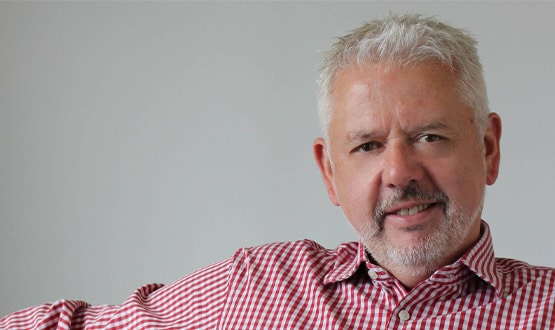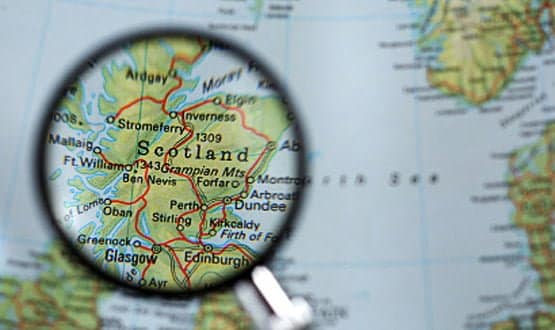Industry Spotlight: Bryn Sage, chief executive at Inhealthcare

Remote patient monitoring went from marginal to mainstream in the Covid-19 pandemic. In this Industry Spotlight, Vivienne Raper talks to Bryn Sage, chief executive at Inhealthcare, about how it happened and what’s next for virtual wards.
Bryn Sage remembers how digital patient monitoring took off in the pandemic. He was using “episodes of care”, how many people interacted with Inhealthcare technology, to track the company’s performance.
“In November 2019, the number of episodes was just over 50,000. I stopped measuring by the back end of the pandemic,” he says.
“The technology had gone mainstream – we’d got to 2.5 million episodes of care.”
Seizing an opportunity
Before the pandemic, Inhealthcare had been delivering remote patient monitoring in several NHS regions. But it was not going mainstream.
“We were trying to get traction,” Sage says. “Some organisations were dipping their toes in the water. But, as with everything, there was resistance to change.”
He remembers this situation beginning to change in February and March 2020. The NHS started talking to companies, such as Apple and Vodafone, about how technology could be used initially to overcome isolation during lockdown and then to help deliver care.
“We submitted our ideas on how remote patient monitoring could ensure people got care while the NHS was dealing with Covid-19. And that’s how we got involved [with NHSX],” Sage adds.
By October 2020, the NHS had decided to focus on care homes and remote monitoring of Covid-19 patients and Inhealthcare successfully bid to supply care home services in London and Covid Oximetry@home (CO@H) in the south of England.
Monitoring Covid at home
CO@H was inspired by clinician experience of seriously ill patients early in the pandemic, including UK Prime Minister, Boris Johnson.
“When the PM [Prime Minister] had Covid, he was fine and then, four or five days later, he was rushed to hospital,” Sage explains.
What clinicians realised is that some people’s blood oxygen was steady but then dropped off a cliff, which meant they needed to go to hospital, and – once they’d started on that process – they went into intensive care.”
CO@H aims to reduce hospital stays and face-to-face disease transmission by providing Covid-19 patients with remote monitoring. After diagnosis, patients are given an oximeter and asked to report vital signs, such as oxygen levels, pulse rate and body temperature.
“What’s unusual in our industry is that it was not all about a smartphone app, we tried to be as inclusive as possible,” says Sage.
Options for reporting in CO@H include web browser, SMS text message, automated phone call or initiating a telephone call with a clinician.
Deploying during Covid
Deploying IT services during the Covid-19 pandemic was a valiant undertaking for many companies. Deploying CO@H was no exception. “What resonated was the team effort required to get it over the line commercially and technically,” says Sage.
After initial skepticism from clinicians about how the service would work, Sage remembers a massive mobilisation of technical staff over Christmas 2020.
“Everyone worked hard to build to requirements,” Sage remembers. “We were all under strain in 2020, but organisations put in a massive effort.”
He reserves special praise for Wessex Academic Health Science Network (AHSN), one of 15 AHSNs designed to spread innovation by connecting the NHS to academic organisations, whose rollout was “exemplary – they really led the charge.”
A massive undertaking
Inhealthcare’s CO@H service is the largest in the country and has, they say, to date, supported more than 25,000 patients.
Sage sounds proud of the service. He quotes research by Matt Inada-Kim, an acute medicine consultant at Hampshire County Hospital and national clinical director for infection, antimicrobial resistance and deterioration, who found CO@H reduced hospital stays by an average of 6.1 days.
“That’s 120,000 bed days saved when the NHS was on the brink of collapse,” he says.
He quotes more statistics from the study, which is not peer reviewed. Only 5.2% of people using CO@H died within 30 days of hospital admission compared to 20.5% in the non-CO@H-using group.
“When I saw those figures, it got me [emotionally],” he says. “When you can say: we helped save X thousand lives with our service, that is technology doing good.”
He’s also proud of the multiple options for CO@H health reporting. According to Sage, more than half the people surveyed by an NHS commissioner did not use the mobile app, with 11% speaking to the hub team and 38% opting for SMS.
“It provides important lessons for inclusion,” he says. “We’ve anecdotal feedback that patients who were poorly with Covid didn’t feel like configuring an app.”
Secrets of success
Sage attributes the success of CO@H to centralised funding: “There was no scurrying around trying to get funding from different projects.”
He also credits a strong ASHN, which managed relationships between the NHS and industry during the rollout. And “on a regional basis, five ICS project leads managed the system so everyone deployed the same solution – and that worked.”
He believes giving patients multiple ways to report on their health improved use of the service, also key to its success.
“They felt comfortable being remotely monitored – it gives a human touch to technology,” Sage says.
Finally, of course, he credits his company. “I’m bound to say the recent project was good because of great tech from Inhealthcare,” he jokes.
Pivoting from Covid-19
As NHS moves towards tackling backlogs in elective care, Sage argues the funding available is being used to repurpose remote monitoring technologies.
“Our technology can be repurposed fairly easily, so what was bought for Covid is being redeployed for – say – blood pressure or other [non-Covid] respiratory conditions,” he says.
The future for remote monitoring and virtual wards, Sage thinks is “about frailty” with “the key thing” being fall prevention.
Fall monitoring needs to be continuous, he explains, with an option to immediately generate a response from a care team.
Forward to the future
In the future, Sage imagines wearable technology to monitor how an old person is sitting or standing – to predict their likelihood of having a fall.
Whatever the future brings, Sage argues remote monitoring is now “mainstream”.
Contact Inhealthcare:
Website: www.inhealthcare.co.uk/
Twitter: @InHealthcareUK
Linkedin: InhealthcareUK




